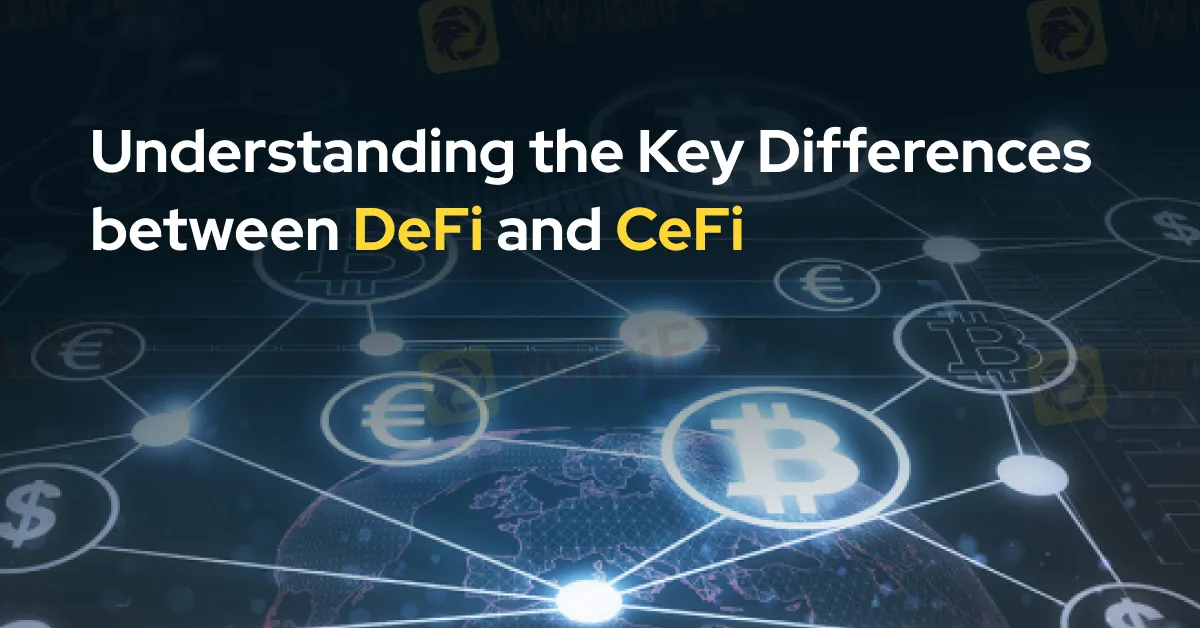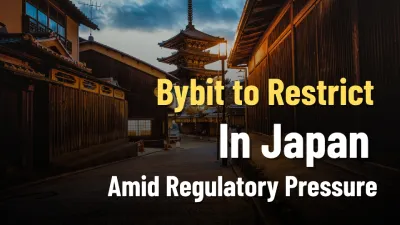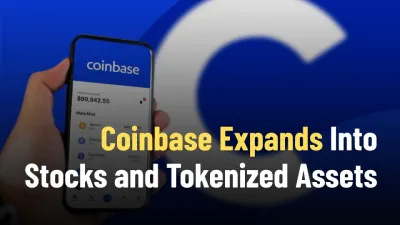Bybit to Restrict Services in Japan Amid Regulatory Pressure
Crypto exchange Bybit will limit access for Japanese users in 2025, citing compliance with strict local regulations.
简体中文
繁體中文
English
Pусский
日本語
ภาษาไทย
Tiếng Việt
Bahasa Indonesia
Español
हिन्दी
Filippiiniläinen
Français
Deutsch
Português
Türkçe
한국어
العربية
Abstract:In this article, we’ll explore the fundamental differences between DeFi and CeFi, helping you understand which approach might be better suited to your needs.

As the world of finance continues to evolve with the rise of cryptocurrencies and blockchain technology, two distinct approaches have emerged: Decentralized Finance (DeFi) and Centralized Finance (CeFi). Both offer unique benefits and challenges, catering to different types of users. In this article, well explore the fundamental differences between DeFi and CeFi, helping you understand which approach might be better suited to your needs.

At the core of DeFi is decentralization. DeFi operates on decentralized networks, often built on blockchain platforms like Ethereum. Unlike traditional financial systems, there is no central authority controlling the system. Instead, governance is typically handled through smart contracts and community consensus. This means that users have full control over their assets and transactions, engaging in peer-to-peer interactions facilitated by decentralized protocols.
In contrast, CeFi involves centralized entities such as exchanges, lending platforms, or banks that manage and control financial services. In a CeFi model, users must trust these central entities with their funds. The centralized platform governs and monitors all transactions and operations, often requiring users to undergo Know Your Customer (KYC) procedures to comply with regulatory standards. This traditional structure provides a level of oversight and security, but it also means users have less control over their assets.

Transparency is another area where DeFi and CeFi diverge significantly. DeFi platforms are inherently transparent and open-source. The code that governs these platforms is available for anyone to audit, and users can see operations happening on the blockchain in real-time. This transparency reduces the risk of hidden fees or manipulations, as everything is visible and verifiable.
CeFi platforms, on the other hand, are less transparent. Users must place their trust in the centralized entity to provide accurate and honest information. While these platforms offer a more familiar and structured experience, the operations, fees, and policies are typically set by the company, with users having little to no insight into the backend processes.

One of the most appealing aspects of DeFi is its accessibility. DeFi platforms are open to anyone with internet access, removing the need for intermediaries or third-party approval. This inclusivity makes financial services available globally, regardless of a users geographical location or socio-economic status.
CeFi, however, often comes with restrictions. Access to CeFi platforms may be limited by geographical location, regulations, and the need to comply with local laws. Users may face barriers such as account approval processes, geographical restrictions, or minimum deposit requirements. While these measures are intended to provide security and compliance, they can limit who can participate in CeFi.

Security in DeFi relies heavily on the robustness of smart contracts and the underlying blockchain technology. While decentralization offers a degree of resilience, it also introduces risks. Smart contracts, if not properly audited and secured, can be vulnerable to bugs, hacks, and exploits. The decentralized nature of DeFi also means that there is no central authority to turn to in case of fraud or loss, placing the onus on the user to ensure security.
In CeFi, security is managed by the centralized entity, which typically employs traditional security measures such as encryption and firewalls. These platforms may offer customer support and insurance to protect user funds, providing a sense of security. However, CeFi is not immune to risks, as centralized platforms can be targets for hacks, insider fraud, or mismanagement, potentially leading to the loss of user funds.

The user experience in DeFi can be both empowering and challenging. While DeFi allows users to take full control of their finances, it often requires a good understanding of blockchain technology, wallets, and smart contracts. The interfaces can be complex, and the learning curve steep, making it less accessible to beginners. However, the landscape is improving, with developers working on creating more intuitive and user-friendly platforms.
CeFi platforms, on the other hand, typically offer a more polished and user-friendly experience. With familiar interfaces, customer support, and a range of services like trading, lending, and staking, CeFi platforms are designed to be accessible to a broader audience. The lower learning curve and ease of use make CeFi an attractive option for those new to cryptocurrencies or those who prefer a more traditional approach to financial services.

DeFi is built on open standards, allowing for seamless interaction between different protocols and platforms. Users can often combine different services, such as lending and trading, across various platforms without needing to trust a single entity. This interoperability enhances the flexibility and innovation within the DeFi ecosystem, enabling users to create complex financial strategies that suit their needs.
In contrast, CeFi platforms are often siloed, with each platform providing distinct services that may not easily integrate with others. Users may need to rely on multiple centralized platforms to access different financial services, leading to potential inefficiencies and higher costs.

Fees in DeFi are generally paid directly to the network, such as gas fees on the Ethereum blockchain, and can vary depending on network congestion. With no intermediaries involved, DeFi has the potential to lower costs. However, high network fees can sometimes be a drawback, particularly during periods of high demand.
CeFi platforms set their fees, which can include transaction fees, withdrawal fees, and service charges. These fees may be higher due to the involvement of intermediaries and the need to maintain platform operations. However, CeFi platforms often provide a clear and predictable fee structure, which can be appealing to users who prefer certainty.
In short, DeFi and CeFi offer distinct approaches to financial services, each with its advantages and challenges. DeFi provides a more open, transparent, and user-controlled experience, appealing to those who prioritize decentralization and autonomy. On the other hand, CeFi offers convenience, user-friendliness, and a familiar financial structure, which can be more accessible to the general public. The choice between DeFi and CeFi often depends on your priorities, risk tolerance, and familiarity with blockchain technology. As the financial landscape continues to evolve, both DeFi and CeFi are likely to play significant roles in shaping the future of finance.

Disclaimer:
The views in this article only represent the author's personal views, and do not constitute investment advice on this platform. This platform does not guarantee the accuracy, completeness and timeliness of the information in the article, and will not be liable for any loss caused by the use of or reliance on the information in the article.

Crypto exchange Bybit will limit access for Japanese users in 2025, citing compliance with strict local regulations.

Coinbase unveils stock trading, prediction markets, and a tokenization platform as it aims to evolve beyond crypto and bridge traditional finance.

Is your MBFX withdrawal request pending even after months of raising it? Has the broker defrauded you? Does the broker keep changing spreads to pile losses for you? Have you lost due to its copy trading activities? Is the customer support service silent to your trading queries? Many traders have called out the broker for these alleged wrongdoings. In this MBFX review article, we have highlighted these trading concerns. Read on!

Uniglobe Markets claims to be an online trading company that offers many different types of investments, including foreign currency and raw materials. The company tries to attract traders by offering high leverage, different account options, and popular MetaTrader trading software. However, there is one major problem: the company does not have proper regulatory oversight. This creates serious concerns about the safety of clients’ capital and whether the company operates honestly. Read on to learn more about its regulatory status.
